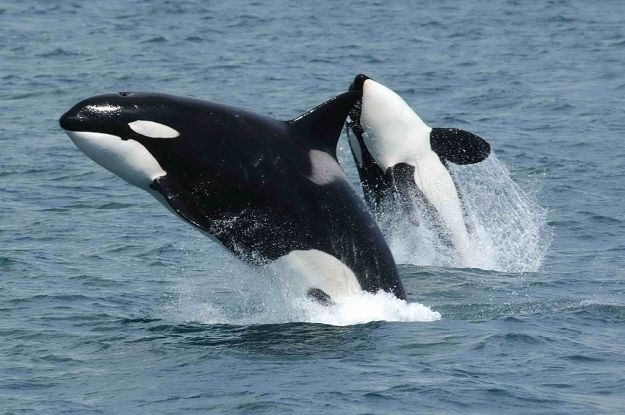The following post is one of a series previewing the research that will be presented at the in Rome, Italy (13-17 May 2018).
A guest post by Andrew C. Johnson
Over a nearly 30 year career in environmental science I have witnessed scares over pesticides, endocrine disruptors, pharmaceuticals, nanoparticles, and now microplastics. The pattern is largely the same, a chemist detects the substance, and then laboratory tests confirm that some toxic properties exist. Further studies are then carried out in the laboratory at what are called ‘environmentally relevant concentrations,’ which appear to clinch the deal. Catastrophe is around the corner, if it hasn’t happened already.

White-tailed eagle grabbing a fish near Raftsund, Lofoten/Norway Photo by Christoph Müller CC-BY 4.0
But what is really happening to exposed wildlife? Why do we not seem to ask this question? Could it be that wildlife exposed to our current fashionable substance of concern are prospering, whilst others might be suffering due to something we have not examined yet? Even worse, existing problems for wildlife might be due to a chemical, such as a metal, which we have lost interest in due to their having gone out of fashion?
Rather than being chemical driven, let us learn to re-connect with trends in wildlife populations and examine their responses to the place and timing of exposure.
Session: Can trends in wildlife populations revolutionise our understanding of the impacts of chemicals on the environment?
15 May 2018 | 8:30 a.m.–10:05 a.m. | Room E

Two mammal-eating “transient” killer whales photographed off the south side of Unimak Island, eastern Aleutian Islands, Alaska. Photographer: Robert Pittman Published courtesy of NOAA.

“Can trends in wildlife populations revolutionise our understanding of the impacts of chemicals on the environment?”
Certainly could greatly increase our understanding, but politicians pervasively do NOT want that monitoring to happen. They fear the power of industry lobbies cutting election funding punitively for any environmental quality agency that tries to do due diligence science for wildlife decline from toxic contaminant exposures and uptake. If funding essential to scientific integrity in assessment is pervasively withheld, how can we ever expect to adequately understand status and trends? We have to do the work, or we will not reach that scientific integrity, and policy will not be informed.
Start with the problem, is wildlife in decline or not?
Recent studies on trends in wildlife showed vast impacts, likely attributable to human activities. An example published in PLOS ONE is entitled “More than 75 percent decline over 27 years in total flying insect biomass in protected areas”, and suggest that important trends can be uncovered. The next step for such studies is to bridge ecological and ecotoxicological methods, to diagnose the probable set of causal factors causing such trends. These methods are swiftly developing, supported by regulatory obligations to collect monitoring data. As an example, the European Water Framework Directive asks for monitoring of so-called Biological Quality Elements, providing raw data on species and ecosystems. Practical approaches to bridge the gap between field-based ecology and laboratory-based ecotoxicology increasingly succeed to diagnose ecological impacts, under Multi-stress and Mixture-exposure conditions. Succesful practical approaches and policies can succeed to protect the environment using chemo-centric preventive approaches, and can succeed to reduce impacts when needed using eco-centric approaches. Both are needed to reach the goal of a ‘non-toxic environment’.
I continue to be amazed and somewhat bemused by the chemocentric nature of these discussions. Wildlife (the large, charismatic kind) suffer from a multitude of diseases that kill thousands of individuals every year (e.g., duck viral enteritis; pneumonia in wild sheep; blue tongue virus and wasting disease in deer; plague and distemper in prairie dogs). We rarely see such large mortality events with chemicals (with the possible exception of an acute event such as a spill). So why the continued focus only on chemical monitoring? How do we tie the two (chemical and pathogen exposures) together? And how do we factor in (or out?) the other large stressors on wildlife populations – significant reductions in habitat; outdoor domestic cats (responsible for large amounts of bird mortality); large objects such as radio towers or buildings (that kill migrating birds); and automobiles (both car-strikes and physical barriers caused by roadways)? Are chemicals really an important stressor to wildlife (particularly the terrestrial species) as compared to all the others?
Animals that go ‘belly up’ associated with chemical known exposure events, may disproportionately represent media for public awareness, yet it is far more of a problem across the natural world that chronic low dose accumulative adverse effects of mixtures of chemical exposures.appear more difficult to recognize. Lab-based science must necessarily oversimplify in order to tease out the science. The ‘real world’ is far more complicated, and only gives a few hints as to correlations and certainly for causation determinations. We really only understand a very small amount of the toxicologic reality, yet we too often contribute to misinformation for public and environmental health (and misrepresent knowledge of scientific method) by media statements that project certitude in conclusions, without giving sufficient clarity about further questions brought up by the research, and limitations. Chronic low dose accumulative adverse effects are the part of the iceberg below the waterline of reality, and drive a lot of societal woes. We should not project overconfidence, without adequate clarification. IMHO
Anne, this comment is spot on! We have to use statistics to indicate the strength of each association. Ideally, we could then rank the relative importance of these stressors, and it would not surprise me if chemicals came way down that list!
Roy, you are right in that chronic low dose exposure is a reality for much of our wildlife. The question is does it matter? The answer is likely to be yes for long lived species such as the killer whales. The marine mammals tend to have a lot fat that compounds the issue with hydrophobic pollutants like the PCBs. But for short-lived organisms the answer is more likely to be no. However difficult these questions, looking at long-term trends in our many different wildlife populations, where we have records, will be key
It seems to me that research in environmental toxicology, and in medical toxicology, both are converging on clarity that when brought to the cellular levels of chemical influence, are intimately root cause determinants of immune disease impairments enabling expression of diseases seen in the wild. Chemical pollutant mixture effects in the real world, beyond the labs necessarily focused on single contaminant adverse effects, include behavioral effects that are population limiting, yet are not as often noticed as being chemically influenced in root cause. I am not surprised that the chemo-centric focus is prominent, because the status and trends of toxicologic research continues to dig deeper into this realization of the chemical nature of root causes.
Re:”The question is does it matter? ”
Yes, it does matter, not just for long lived species, but across the board. IMHO